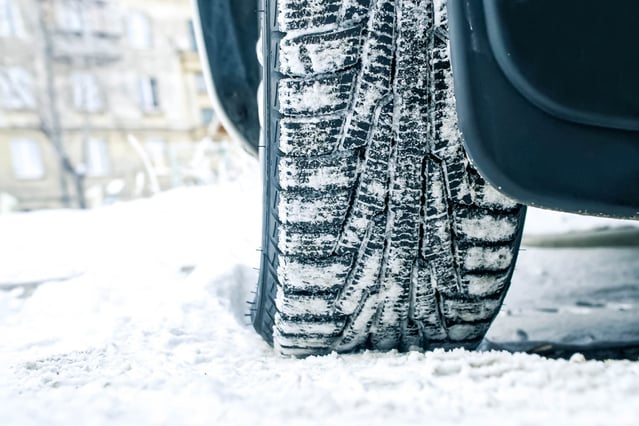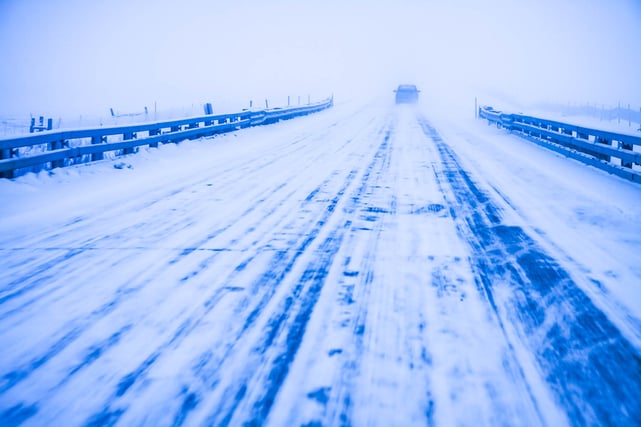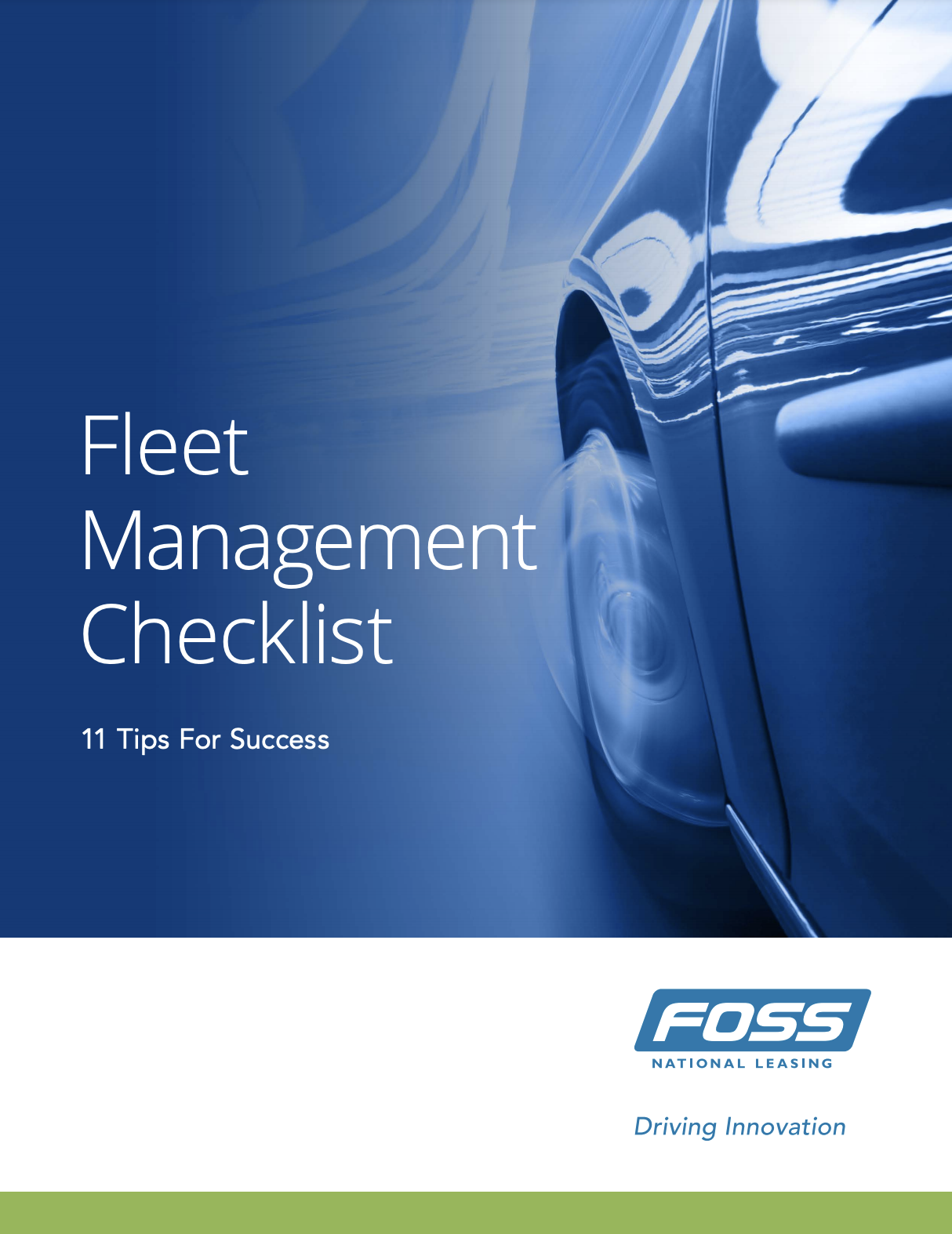
Here in Canada, winter weather is right around the corner. Conditions are about to get icier, it will take longer for drivers to get around, and accident risks will skyrocket.
So how can you keep your drivers safe this season?
In today’s article, we’ll share information on some of the latest tire technologies, key tips for choosing tires for the winter season, and simple winter driving tips that will both protect drivers and give you peace of mind.
Winter driving safety should still be top of mind
Even though (at the time of writing this article) the economy has reopened, fleet service levels are still lower than they were pre-pandemic. But it’s still important to ensure that each of your vehicles and drivers are ready for winter driving conditions. Since there are more distractions and stressors in our lives right now, focusing on the basics of winter driving safety is key.
And while we don’t foresee any delays in securing appointments to have your tires changed, it’s always best to stick to the rule of thumb: “Don’t wait until the snow flies.” Schedule your appointment as soon as possible, so you won’t be inconvenienced when winter does hit.
All-season tires are not winter tires
You might say, “Hey I’ve got some good all-season tires on my car. Why do I need winter tires?”
In reality, all-season tires are only good for driving during spring, summer, and fall. Some manufacturers are starting to call them three-season tires now, because they actually don’t work well in most winter conditions. This is because the treads of all-season tires are relatively smooth and straight, which is a problem when driving on slushy roads.
But on slushy, snowy roads is where winter tires excel. A study conducted by the Quebec Ministry of Transport showed that a proper winter tire can improve braking up to 25% over an all-season tire, and can improve collision avoidance by 38%. In fact, in Quebec, where snow tires are now mandatory, winter collisions have been reduced by nearly 20%.
Today’s snow tires are more advanced than ever. Manufacturers continue to evolve the special rubber compounds used to make them. So, even when temperatures plummet, the rubber remains pliable, allowing it to grip the road better. When you combine this with ice-specific tread patterns, drivers are able to steer and brake more safely.

Which winter tire suits your fleet?
When it comes to weather, Canada is certainly unique in the diversity of temperatures and conditions across the country. We’re also unique in terms of our tire needs, and there isn’t a one-size-fits-all solution for fleets across Canada.
So while studded tires are great for extreme icy conditions, they may not be necessary for fleets operating in larger cities. If you fall into the latter category, you might want to explore your tire options a bit further. There are some important technological advancements that our colleagues at Nokian Tyre have recently shared with us, and we’ll highlight two of them below:
1. Tires that use walnut shells or polymer crystals for grip. As these tires wear, the embedded crystals or walnut shells are exposed, providing ongoing additional grip.
2. Bulletproof tire sidewalls. Just as important as aggressive tread and snow removal capabilities is the sidewall of the tire, which will protect it from punctures. Nokian has developed tires with bulletproof side walls made of carbon fibre and weave, just like a bullet proof vest.
When considering winter tires this year, ask about how some of these new tire technologies can help better protect your fleet drivers. Here at Foss National, we work with partners, like Nokian, to provide the best tire solutions for our customers.
The difference between premium and standard winter tires
It’s also important to understand the distinction between standard and premium winter tires. All winter tires must meet minimum requirements in order to be stamped with the three-peak mountain snowflake symbol.
But there are winter tires that exceed those requirements, providing even better traction and reduced stopping distance. So if you’re going to invest in winter tires, considering some of the premium options out there may be worthwhile if you’re looking for increased safety.
How to get the most value from your winter tires
Like anything, winter tires are designed for a specific purpose. Don’t leave them on your vehicle all year long. The compounds that make them so useful in the winter wear down quickly in warm weather. Winter tires last only three seasons, compared to about five for their all-season cousins, and they should be rotated every 6,000-9,000 kilometres to ensure they’re wearing evenly.
The easy way to get around at least part of the hassle of changing tires every winter and spring is to buy a second set of rims for the snow tires. They'll save you future costs when it's time to take them off in the spring.

When to consider all-weather tires
In cities like Toronto and Vancouver, it may be appropriate to equip your fleet with winter tires, but mild climates and less snow may prevent you from taking full advantage of the tires’ technology and benefits. And as we’ve stated above, winter tires wear down a lot faster in milder weather conditions.
So for these areas, all-weather tires are a viable alternative. All-weathers drive well in milder winter conditions, heavy rain, quickly-melting snowfall, and slush. They’re three-peak certified, which means they meet provincial tire guidelines for winter driving, and they provide a good blend of performance and safety—all while eliminating the cost and hassle of switching between summer and winter tires.
But keep in mind that safety always comes first. Drivers need to know you prioritize their safety over your costs. So consider the climate in your area, and don’t hesitate to ask a professional for a recommendation if you’re unsure of whether to go with all-weather or winter tires.
(Related post: 10-Step Winter Driving Safety Checklist for Fleets)

Additional tips to prepare vehicles for winter driving safety
Besides tires, there are a few other maintenance areas to look at when preparing vehicles for winter. Make sure you get each vehicles’ brakes and fluids checked. Anything that’s a minor issue in warm weather is likely to become a major one in bad weather.
Clear all snow and ice from the vehicle before sending drivers out. Emphasize how critical it is that they drive slowly, and make any necessary scheduling adjustments to allow them to arrive at service areas on time.
Here are seven quick safety tips you can share with drivers. Consider posting them on an internal messaging board that drivers can look at regularly.
- Increase your following distance in winter conditions. The Canada Safety Council recommends a distance of 8-10 seconds.
- Become familiar with correct braking procedures. Release the gas pedal well in advance of stopping so less pressure is needed on the brakes.
- Learn how to spot black ice. Look out for dark, wet-looking patches on the road. If you get caught on black ice, remove your foot from the gas pedal, and avoid slamming on the brakes.
- Don’t tailgate on icy or snowy roads, because these types of conditions increase stop time.
- Never put your vehicle on cruise control if the weather conditions are snowy, icy, or wet. If your car skids or hydroplanes, it will result in acceleration, and you’re more likely to lose control of the vehicle.
- The days are getting darker and shorter. Keep vehicle lights on to increase your visibility.
- Driving on icy and snowy roads is tricky, so pay extra attention to your surroundings and what your next move is going to be.
The folks at Overland have provided a number of other safe driving tips for a variety of circumstances, which your drivers might find helpful.

Attitude is a key component of winter driving safety
Even with the best winter or all-weather tires on your vehicles, drivers are still at risk in winter conditions. So it’s vitally important that you create a company culture of having respect for the weather and not becoming overconfident while driving.
Create an environment in which fleet drivers feel comfortable speaking up if they feel unsafe about making a routine sales or service call. And consider cancelling trips if necessary. If the last six months have told us anything, it’s that a lot of work can happen remotely, so take advantage of this if necessary.
Conclusion
Having the right tires are crucial for anyone driving in winter conditions. However, while snow or all-weather tires do improve winter driving safety, there are also actions drivers themselves can take to reduce the risk of accidents.
When road conditions are challenging, instruct drivers to simply slow down. Don’t fill their schedule with more appointments than they can safely meet. They’ll get where they need to be in one piece and feel more relaxed in the process.
Driving in snow and ice is a challenge at the best of times; equipped with the right tires and proper driving habits will help drivers navigate the roads better and safer.
Next Step
Download Fleet Management Checklist: 11 Tips for Success. This checklist will give you practical information on how to manage all your fleet's moving parts successfully.








